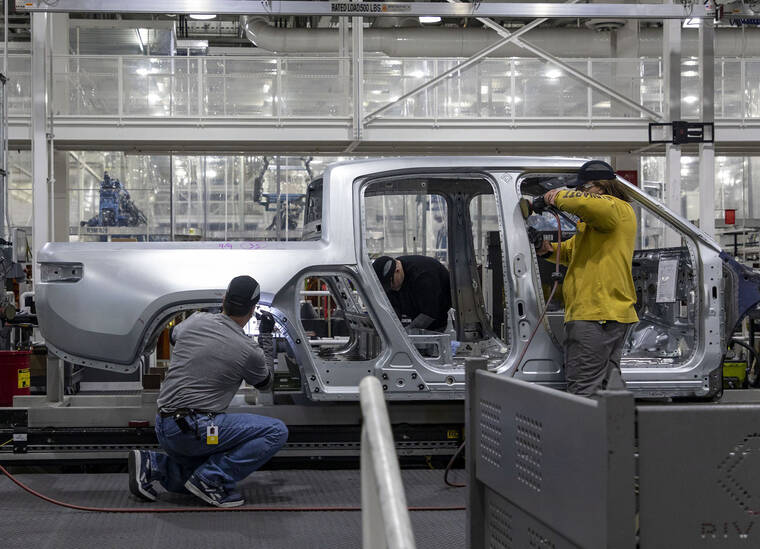WASHINGTON— Leased vehicles will likely be able to qualify for new commercial electric vehicle tax credits without meeting stringent mineral and battery requirements or being built in North America, according to U.S. Treasury Department guidance released Thursday.
It’s a victory for automakers like Rivian Automotive, Hyundai Motor and Kia Corp., as well as the South Korean government, all of which have urged the government to broadly interpret the definition of “commercial clean vehicles” in the recently passed Inflation Reduction Act to include leased cars, rental cars and cars used for rideshare fleets such as Uber and Lyft.
It goes against the wishes of Sen. Joe Manchin, the conservative Democrat from West Virginia who shaped the legislation and who asked the Treasury Department not to allow leased vehicles to qualify.
He blasted the guidance in a statement Thursday and demanded the agency pause implementation until it could come in line with the intent of the law — to reshore manufacturing supply chains and reduce dependence on “foreign adversaries.”
The new guidance “bends to the desires of the companies looking for loopholes and is clearly inconsistent with the intent of the law. It only serves to weaken our ability to become a more energy secure nation,” he said in a statement.
“It is unthinkable that we still depend on China and Russia for the materials and manufacturing necessary to power our nation in the 21st century and I cannot fathom why the Biden Administration would issue guidelines that would ensure we continue on this path.”
He added that he would introduce legislation when Congress returns in January that would stop the Treasury Department from implementing its interpretation.
Toyota Motor Corp. and Tesla Inc. have also asked the Treasury Department not to allow such an interpretation, and General Motors Co. CEO Mary Barra has said “sticking to the intent of the bill” is important.
The Inflation Reduction Act, which passed earlier this year, changed $7,500 consumer tax credits for electric vehicles to require that eligible vehicles be assembled in North America. It’s drawn the ire of key allies including South Korea, Japan and the European Union.
The law also required vehicles to use increasing amounts of critical minerals from the U.S. or countries the U.S. has free trade agreements with, and increasing levels of North American battery components. It also set income and price limits, and disqualified vehicles from credits if they include any components or minerals made in a “foreign entity of concern” in an effort to distance U.S. companies from a China-controlled battery supply chain.
A vehicle would qualify for half of the credit if it meets either the battery component requirement or the mineral requirement, and the full credit if it meets both. Automakers have expressed frustration over the tough-to-meet thresholds and have estimated that no existing vehicles would qualify in January if implemented as-is.
But vehicles bought for commercial use don’t have to meet the new requirements.
The guidance released Thursday by the Treasury Department is intended to provide automakers with a sense of the “anticipated direction” of the critical mineral and battery component requirements they will need to meet to qualify for the new consumer tax credits.
It also said Treasury will welcome input on what counts as a “free trade agreement,” but noted it would at least encompass deals with Australia, Bahrain, Canada, Chile, Colombia, Costa Rica, Dominican Republic, El Salvador, Guatemala, Honduras, Israel, Jordan, South Korea, Mexico, Morocco, Nicaragua, Oman, Panama, Peru and Singapore.
The agency said it will release its full proposed rule in March. The mineral and battery component requirements for consumers won’t go into effect until then, even though the new tax credit kicks in on Jan. 1.
The delay creates a two-month window in which automakers and car buyers may be able to take advantage of tax credits they wouldn’t otherwise qualify for. The Treasury’s two-month delay will allow vehicles that are assembled in North America to qualify, briefly, without meeting the content requirements.
That includes the Chevrolet Bolt EUV and EV; Tesla Models 3, S, X and Y; the Jeep Grand Cherokee 4xe and Wrangler 4xe; the GMC Hummer EV Pickup and SUV; the Ford Mustang Mach-E, F-150 Lightning and Escape PHEV; and the Nissan Leaf, among others.



